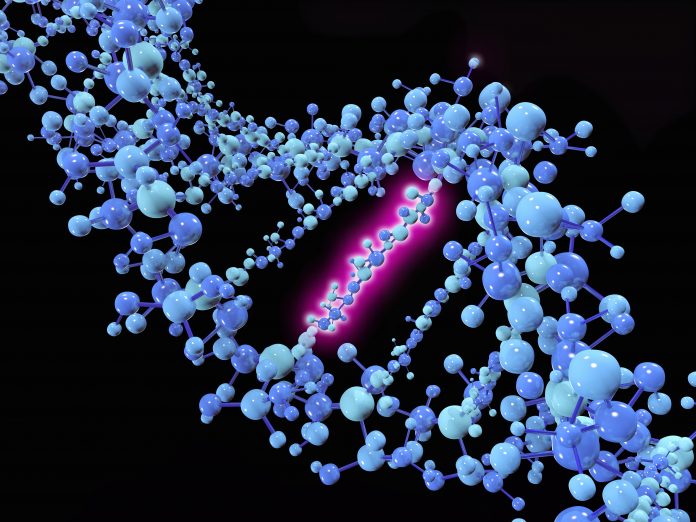
Researchers from the University of Dundee’s Centre for Targeted Protein Degradation (CeTPD) and collaborators from pharma company Boehringer Ingelheim (BI) have developed a promising new small-molecule drug that has shown efficacy against 13 of the 17 most common KRAS mutant-driven cancers. Details of this new research are published in the journal Science.
KRAS mutations are implicated in between 17 percent and 25 percent of all cancers, but current therapies are limited, primarily targeting only G12C mutations, which leaves as many as 50 percent of patients with cancer driven by a KRAS mutation without targeted treatment options.
But the newly developed molecule ACBI3 shows promise to address a much broader range of KRAS mutation-driven cancers and takes a different approach than the traditional attempts of KRAS targeted drug development. Instead of attempting to inhibit the activity of mutant KRAS, ACBI3 degrades the mutant genes. It was developed by multi-disciplinary teams in the laboratory of professor Alessio Ciulli of CeTPD and Boehringer Ingelheim and is based on a class of small molecules called PRoteolysis TArgeting Chimeras (PROTACs).
KRAS mutations are associated with several aggressive and hard-to-treat cancers including pancreatic cancer, colorectal cancer, and lung cancer. These mutations are known to be highly resilient against current treatments. Because of this, KRAS is one of the most researched potential treatment targets for cancer therapy development.
Unlike traditional inhibitors that target a single mutation, ACBI3 has shown it can rapidly eliminate 13 out of the 17 most common KRAS mutants with high potency and selectivity. In preclinical mouse models, it induced effective tumor regression, demonstrating significant potential for KRAS degradation as a transformative therapeutic method.
The mechanism behind ACBI3’s efficacy involves the use of PROTACs, which consist of two “prongs.” One prong attaches to the target protein—KRAS in this case—while the other prong recruits an E3 ligase, a component of the cell’s natural disposal system called the ubiquitin-protease. This tags the target protein as “expired” which alerts the ubiquitin protease to rapidly degrade that protein.
The collaborative effort involved co-first authors Johannes Popow, Christiane Kofink and Andreas Gollner from BI, and William Farnaby from the University of Dundee. The teams’ goal was to rationally design protein degraders that could address a broad swath of the oncogenic KRAS mutations.
They started with high-quality small-molecule prongs at one end linked to the E3 ligase von Hippel-Lindau (VHL) proteins at the other end, which led them to an initial protein that appeared promising. The team then co-crystalized KRAS, the PROTAC and VHL and employing X-ray crystallography were able to see the structure of this new complex down to atomic detail. This helped the investigators better understand how the molecule was able to recruit the two proteins together. With this knowledge, the researchers then further improved the compound to enhance its activity.
While such a development would normally be held as proprietary, Boehringer Ingelheim has taken the unprecedented step to make the ACBI3 compound available to the global research community through its opnMe®portal. This will allow researchers to access high-quality molecules for free, in an effort to accelerate innovation in cancer research.
“Sharing this tool with the research community at large will enable scientists to study the consequences and potential of degrading a key cancer-driving protein with the ultimate aim of transforming the lives of people living with cancer,” said Peter Ettmayer, head of Drug Discovery Vienna at Boehringer Ingelheim.





